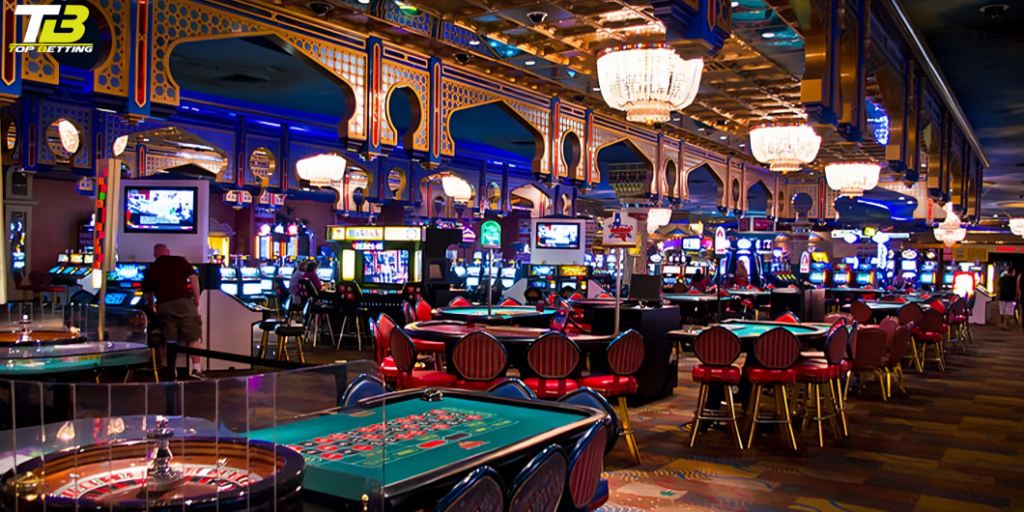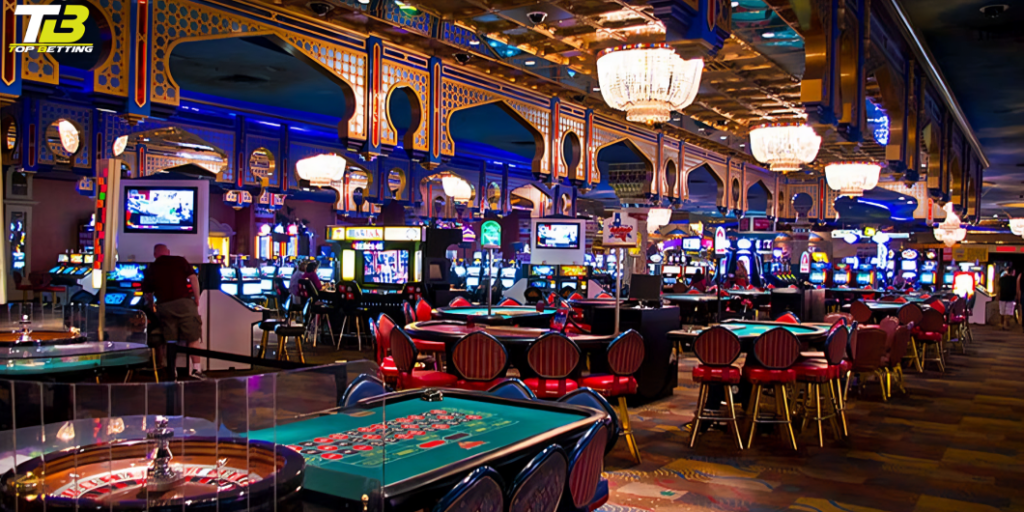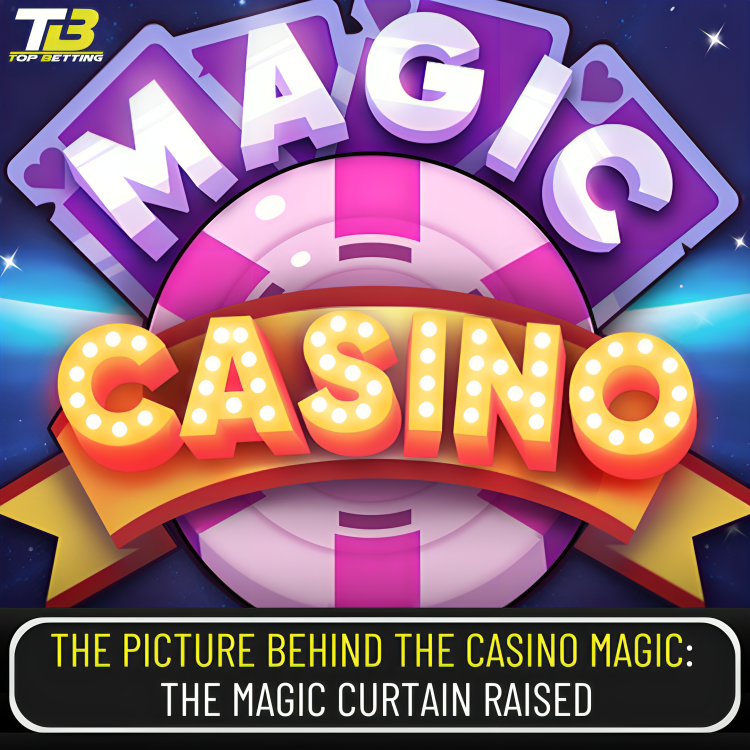
The picture behind the casino magic
Step behind the scenes and discover the captivating world hidden beyond the flashy lights and spinning roulette wheels. In our article, “The picture behind the casino magic: The Magic Curtain Raised,” we unveil the secrets and stories that make the casino experience so enchanting.
Unveiling the curtain of secrecy, we delve into the inner workings of the casino industry, shedding light on the meticulous planning, technological marvels, and awe-inspiring entertainment that create an unforgettable gambling experience. From the cutting-edge surveillance systems that ensure player safety to the meticulously designed interiors that evoke a sense of luxury and opulence, we expose the intricate details that make casinos a magnet for millions.
Join us as we explore the fascinating history and evolution of casinos, from the old-world charm of Monte Carlo to the glitz and glamour of Las Vegas. Along the way, we’ll dive into the psychology behind casino design and discover how both experienced players and newcomers are tantalized and enticed.
Get ready to have the magic curtain raised and see the casino world from a whole new perspective.
The History of Casinos
Casino games have been a part of human civilization for centuries. The origins of gambling can be traced back to ancient civilizations such as the Egyptians and Greeks, who played games of chance for entertainment and divination purposes. In the Middle Ages, gambling was prevalent in Europe, with games like dice and card games gaining popularity among the nobility and commoners alike. The concept of casinos as dedicated gambling establishments emerged in the 17th century, with the opening of the Ridotto in Venice, Italy. This establishment paved the way for the modern-day casino, where people could gather to play games of chance and socialize.
As time went on, casinos spread across the globe, each with its own unique flair and atmosphere. From the elegant casinos of Monte Carlo, frequented by royalty and the elite, to the bustling riverboat casinos of the Mississippi River, gambling establishments have always held a certain allure. Today, Las Vegas stands as the epitome of casino culture, with its larger-than-life resorts and endless entertainment options. The history of casinos is a rich tapestry of human ingenuity, risk-taking, and the pursuit of fortune.
The Rise of Online Casinos
In the digital age, the casino industry has seen a significant shift with the rise of online casinos. Online gambling has become increasingly popular, offering convenience and accessibility to players around the world. The first online casino was launched in 1994, marking the beginning of a new era in gambling. Since then, online casinos have evolved rapidly, with advancements in technology enabling immersive gaming experiences and secure transactions.
One of the key advantages of online casinos is the ability to play from the comfort of one’s home. Players no longer need to travel to a physical casino to enjoy their favorite games. Additionally, online casinos offer a wide variety of games, from classic table games like blackjack and roulette to modern video slots with stunning graphics and innovative features. The rise of mobile gaming has further contributed to the popularity of online casinos, allowing players to enjoy their favorite games on the go.
However, the rise of online casinos has also raised concerns about responsible gambling and addiction. With 24/7 access to gambling, it is important for players to set limits and gamble responsibly. Online casinos have implemented various measures to promote responsible gambling, such as self-exclusion programs and age verification checks. Despite the challenges, online casinos continue to thrive, attracting a new generation of players with their convenience and exciting gameplay.
How do Casinos Make Money?
Casinos are not built on luck alone; they are carefully designed to ensure a profitable business model. Understanding how casinos make money is essential to unraveling the magic behind the scenes. The primary source of revenue for casinos comes from the “house edge,” which is the statistical advantage the casino has over players in each game. This edge is built into the rules of the games, ensuring that, in the long run, the casino will always come out on top.
In games like blackjack and roulette, the house edge is achieved by paying out slightly less than the true odds of winning. For example, in roulette, the payout for a single number bet is 35 to 1, even though the odds of winning are 37 to 1. This difference ensures that, on average, the casino will make a profit over a large number of bets. Additionally, casinos often offer enticing bonuses and promotions to attract players and keep them coming back for more.
Another significant source of revenue for casinos is the sale of food, drinks, and other amenities. Many casinos have restaurants, bars, and entertainment venues within their premises, which generate additional income. The luxurious resorts in Las Vegas, for example, offer world-class dining options, high-end shopping, and live entertainment shows, creating a complete entertainment experience for visitors. These auxiliary revenue streams complement the income generated from gambling and contribute to the overall success of casinos.
Behind the Scenes of a Casino
Behind the glitz and glamour of the casino floor lies a well-oiled machine that keeps everything running smoothly. From the moment a guest walks through the doors, their experience is carefully curated to ensure maximum enjoyment. The layout and design of a casino are meticulously planned to create an atmosphere that is both enticing and comfortable.
Casino interiors are often designed to evoke a sense of luxury and opulence. High ceilings, chandeliers, and intricate architectural details create a grand ambiance that transports guests to a different world. The use of colors, lighting, and music is carefully chosen to enhance the overall experience and create a sense of excitement. Additionally, the placement of gaming tables and machines is strategically planned to maximize player engagement and revenue.
In addition to the physical design, casinos invest heavily in the latest technology to enhance security and streamline operations. State-of-the-art surveillance systems monitor the entire casino floor, ensuring the safety and integrity of the games. Advanced analytics software helps casinos track player behavior and preferences, allowing them to tailor their offerings to individual players. The integration of technology has revolutionized the casino industry, making it more efficient and customer-centric than ever before.
The Role of Technology in Modern Casinos
Technology plays a crucial role in the modern casino industry, shaping both the gaming experience and the behind-the-scenes operations. One of the most significant technological advancements in recent years is the introduction of electronic gaming machines (EGMs), also known as slot machines. These machines have evolved from mechanical devices with spinning reels to sophisticated computer systems that offer a wide range of games and features. The use of random number generators (RNGs) ensures fair gameplay and prevents any manipulation of the outcomes.
Another area where technology has made a significant impact is in online casinos. The development of secure online platforms and payment systems has made it possible for players to enjoy casino games from their computers or mobile devices. The use of encryption technology ensures that personal and financial information is kept safe, giving players peace of mind while they gamble online. Furthermore, virtual reality (VR) and augmented reality (AR) technologies are starting to make their way into the casino industry, offering immersive and interactive gaming experiences.
Technology has also transformed the way casinos market their services. Digital marketing strategies, such as search engine optimization (SEO) and social media advertising, have become essential tools for attracting and retaining customers. Casinos leverage data analytics to understand player preferences and behavior, allowing them to tailor their marketing efforts to specific target audiences. The integration of technology has opened up new possibilities for the casino industry, creating a more personalized and engaging experience for players.
Casino Marketing Strategies

Marketing plays a crucial role in the success of any casino. With fierce competition in the industry, casinos employ a variety of strategies to attract and retain customers. One of the most effective marketing tools is loyalty programs, which reward players for their continued patronage. These programs offer various perks, such as discounts, free play, and exclusive access to events and promotions. By incentivizing loyalty, casinos can build a strong customer base and encourage repeat visits.
In addition to loyalty programs, casinos invest heavily in advertising and promotions. Television and radio commercials, billboards, and online advertisements are common channels used to reach potential customers. Casinos also host special events, such as concerts, celebrity appearances, and themed parties, to create buzz and attract new visitors. The use of social media platforms allows casinos to engage with their audience, share updates, and run targeted campaigns.
Personalized marketing is another strategy that casinos employ to cater to individual preferences. By collecting data on player behavior, casinos can offer tailored promotions and recommendations. This level of personalization creates a more immersive and enjoyable experience for players, increasing the likelihood of return visits and customer loyalty. The casino industry continues to evolve, embracing new marketing strategies and technologies to stay ahead in a competitive market.
The Psychology behind Casino Design
The design of a casino is carefully crafted to create an environment that captivates and entices players. From the layout of the gaming floor to the colors and sounds, every element is strategically chosen to maximize player engagement. The psychology behind casino design is rooted in the principles of behavioral psychology and neuroscience, aiming to create an immersive and enjoyable experience for players.
One key aspect of casino design is the use of colors. Warm tones, such as red and gold, are often used to create a sense of excitement and energy. These colors stimulate the release of dopamine, a neurotransmitter associated with pleasure and reward, which can enhance the overall gambling experience. Additionally, the use of low ceilings and dim lighting creates a cozy and intimate atmosphere, making players feel more comfortable and relaxed.
Sound also plays a crucial role in the casino environment. The constant chiming of slot machines, the shuffling of cards, and the background music all contribute to the overall sensory experience. Casinos often use carefully selected music and sound effects to create a specific mood and ambiance. Upbeat music and energetic sounds can increase arousal levels, while soothing music can create a sense of calm and relaxation. These auditory cues help to enhance the emotional responses of players and keep them engaged.
The layout of a casino is designed to encourage exploration and prolong playtime. The strategic placement of gaming tables and machines, along with the use of curved pathways, creates a sense of flow and encourages players to move around the casino floor. Additionally, casinos often use visual cues, such as signage and lighting, to guide players to specific areas or games. This layout is intended to keep players engaged and encourage them to continue gambling.
Casino Regulations and Responsible Gambling
As with any industry involving gambling, casinos are subject to regulations and guidelines to ensure fairness and protect players. Casino regulations vary from country to country, with each jurisdiction having its own set of rules and requirements. These regulations cover various aspects of the casino industry, including licensing, game fairness, player protection, and responsible gambling measures.
One of the primary objectives of casino regulations is to prevent money laundering and ensure the integrity of the games. Casinos are required to implement robust anti-money laundering (AML) measures, such as customer due diligence and transaction monitoring. Additionally, gaming authorities conduct regular audits to ensure that casinos are operating in compliance with the regulations.
Responsible gambling is another crucial aspect of casino regulations. Casinos are required to provide information and resources to help players gamble responsibly. This includes displaying warning signs about the risks of gambling, offering self-exclusion programs, and providing access to support services for problem gambling. Many casinos also have trained staff members who can assist players in identifying and addressing potential gambling issues.
The casino industry recognizes the importance of responsible gambling and strives to create a safe and enjoyable environment for players. By adhering to regulations and implementing responsible gambling measures, casinos can ensure that gambling remains a form of entertainment rather than a harmful activity.
Conclusion: The Future of the Casino Industry
The casino industry has come a long way since its humble beginnings. From the ancient civilizations that first embraced gambling to the modern-day casinos that offer a complete entertainment experience, the industry continues to evolve and adapt to changing times. The rise of online casinos, advancements in technology, and changing consumer preferences have reshaped the landscape of the industry.
Looking ahead, the future of the casino industry holds both challenges and opportunities. The continued growth of online gambling is expected to reshape the industry further, with mobile gaming and virtual reality becoming increasingly prevalent. Casinos will need to embrace technological advancements and innovative marketing strategies to attract and retain customers in a competitive market.

Additionally, the focus on responsible gambling and player protection is likely to continue. As society becomes more aware of the potential risks associated with gambling, casinos will need to prioritize responsible gambling measures and provide support to those who may be at risk. By creating a safe and enjoyable environment, casinos can ensure the long-term sustainability of the industry.
In conclusion, the casino industry is a fascinating world that combines entertainment, psychology, and technology. Behind the flashy lights and spinning roulette wheels lies a well-orchestrated symphony of design, marketing, and regulations. Whether you’re a seasoned gambler or a curious observer, lifting the magic curtain to see the inner workings of the casino industry is a journey that will leave you captivated and enlightened.











